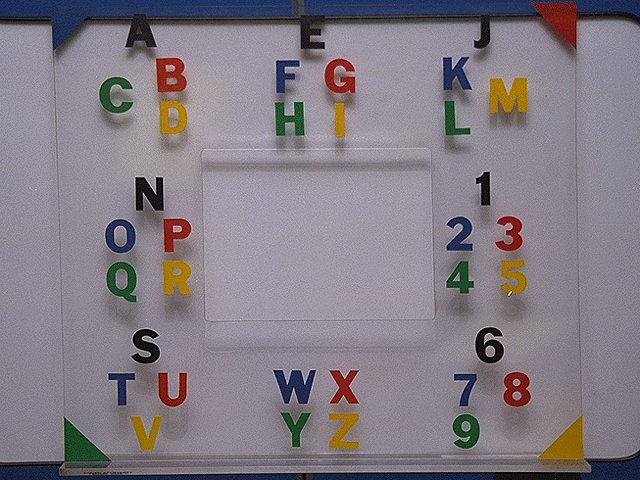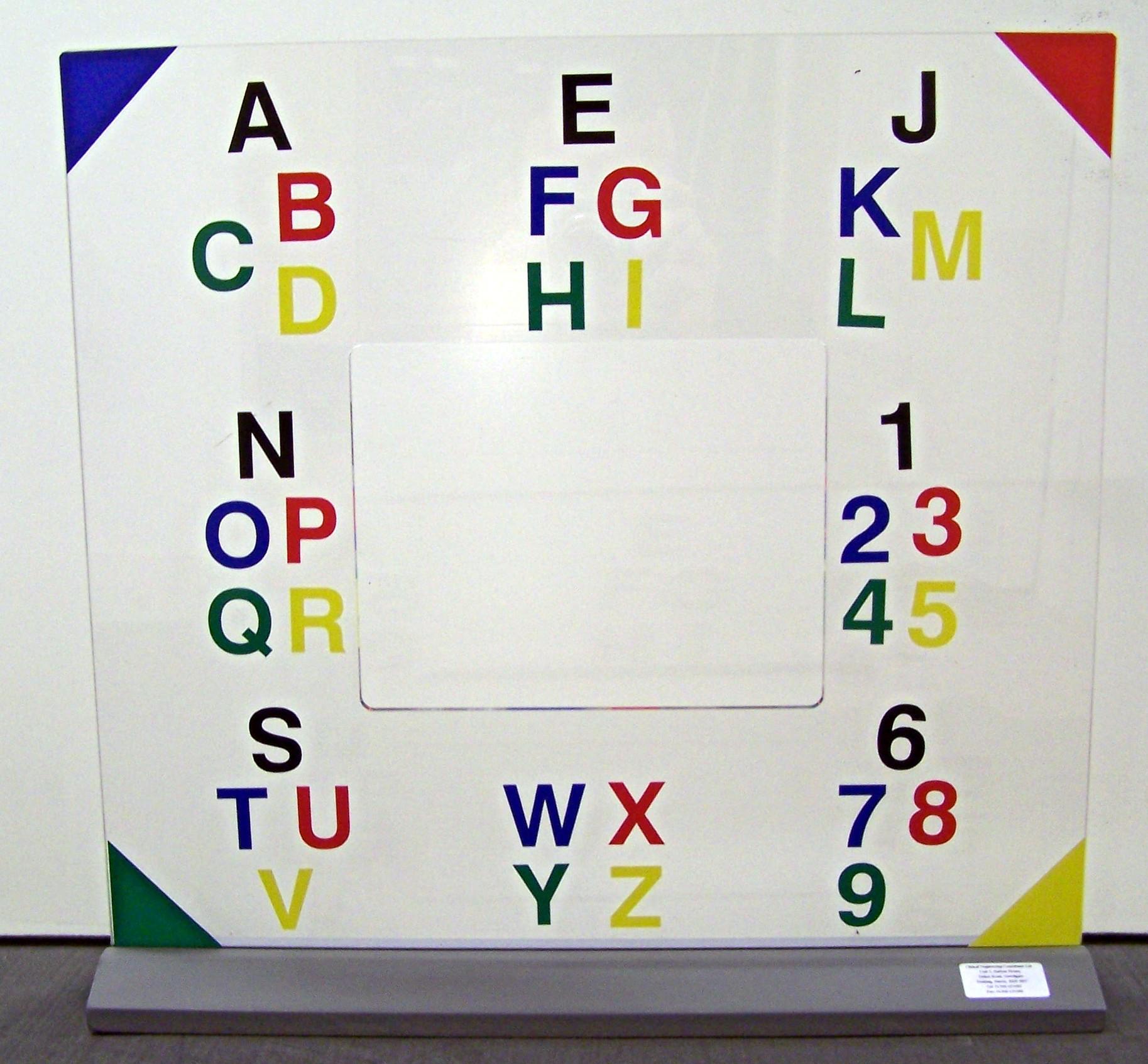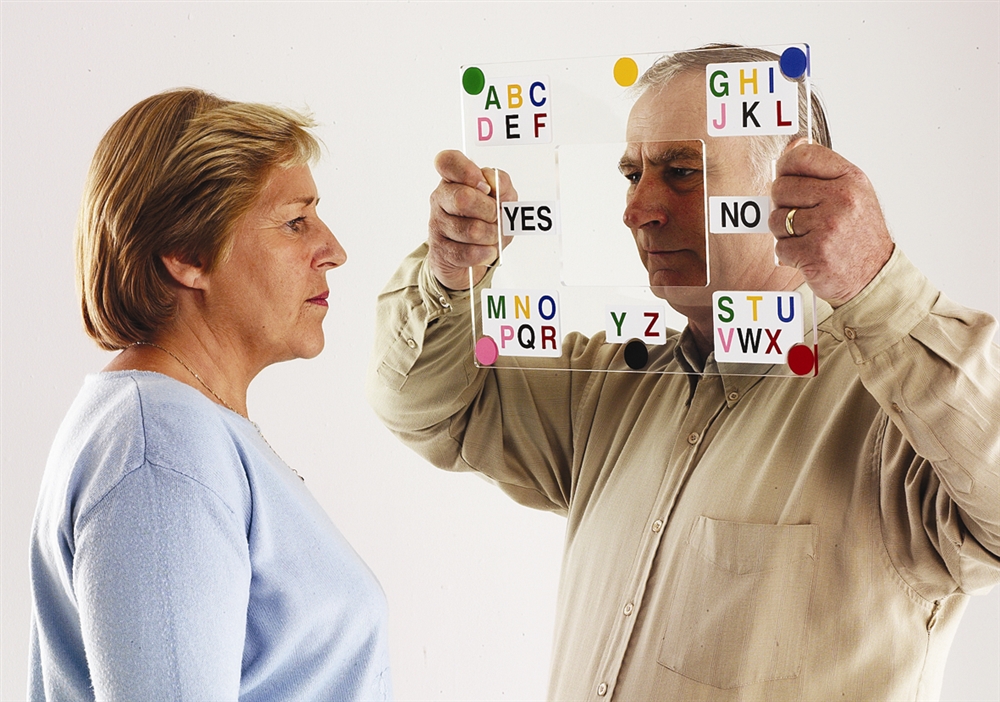


Clear perspex 'eye-gaze' communication board. Letters, symbols, or pictures can be used. Supplied with or without letters in upper or lower case for positioning as required.
Clinical Engineering Consultants Ltd
Winslow Resources
Manufacturer's Product Description
The E-Tran frame is made of clear Perspex and can be used to allow non-verbal people to communicate using eye-pointing. The frame is available without characters, with characters attached as shown or supplied with loose characters for self customised layouts. Adults or children who have lost their speech and are physically unable to write can benefit from using the E-Tran frame. They can use a frame with a colour-coded alphabet to spell out what they want to communicate using eye-pointing. The E-Tran frame is a low cost, flexible piece of equipment which enables two-way communication for a group of people that would otherwise be unable to indicate there needs or communicate with there families and carers. The clear Perspex enables the person to look at a letter, word, symbol or picture of what they want to say, and by following the direction of their gaze. The person watching can clearly see where they are looking and interpret the message accordingly.
Manufacturer's Contact Details
Clinical Engineering Consultants Ltd
Unit 2, Harlow House
Dukes Road
Newdigate
Dorking
Surrey
RH55BY
UK
01306631681 cec.co@lineone.netKey Features
No Key Features have been specified for this product
Product Dimensions
No dimensions have been specified for this product
Product Specification
No product specification has been specified.